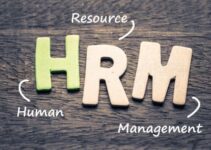Nature of Human Resource Management
Simply put, Human Resource Management (HRM) refers to the application of management principles to management of people in an organization. This is too simple a statement and fails to capture the essence of human resource management.
In its essence, Human resource management comprises the following:
1. HRM consists of people-related functions as hiring, training and development, performance review, compensation, safety and health, welfare, industrial relations and the like. These are typically the functions of ‘Personnel Management’ and are administrative and supportive in nature. Appropriately called ‘doables’, these activities are highly routinized and have been often outsourced.
More important functions of human resource management are the building of human capital. Human capital refers to the stock of employee skills, knowledge and capabilities that may not show up in a balance sheet but have significant impact on a firm’s performance.
Human capital (also known as ‘deliverables’) lends competitive advantage to a firm. Obviously, building human capital is the major function of an HR professional. These activities (routine as well as capital building initiatives) are not carried out in isolation. They are interdependent.
2. Human resource management necessitates alignment of HR policies and practices with the organization’s strategies – both corporate as well as functional. By meshing HR practices and policies with strategies, the HR executive helps formulate and implement business strategies. The HR manager then assumes the mantle of a strategist. In fact, as will be stated later, the very concept of HRM signifies that the role of HR executive is elevated, from an administrative level, to that of the board. He or she becomes the member of the board and thus takes part in decision making.
3. As stated above, human resource management involves the application of management principles and functions to doables and deliverables of people management.
4. Human resource management assumes that it is the people who make the difference. They alone are capable of generating value and adding to the competitive advantage to organizations.
5. HR activities, both doables and deliverables, are not the sole responsibility of the HR specialists. Line managers are equally responsible for carrying out the activities.
6. HR functions are not confined to business establishments only. They are applicable to non-business organizations too, such as education, health care, recreation and the like.
Functions of Human Resource Management
Henry Mintzberg identified 10 roles (read functions) which managers play in organizations. A typical manager, according to Mintzberg, acts as a monitor, disseminator, spokesperson, figure-head, leader, liaison, entrepreneur, disturbance handler, resource allocator and negotiator. He classifies these ten roles into three broad categories: first three together are called informational role, next three constitute the interpersonal role, and the decisional role includes the remaining four.
In the same vein, one can attempt to isolate the typical functions of HRM. Eight key HRM functions together with policies, programmes and practices have been identified, each containing alternatives from which managers can choose. The functions are
Planning: Preparing forecasts of future HR needs in the light of an organization’s environment, mission and objectives, strategies, and internal strengths and weaknesses, including its structure, culture, technology and leadership.
Staffing: Obtaining people with the appropriate skills, abilities, knowledge and experience to fill jobs in the work organization. Key practices are human resource planning, job analysis, recruitment and selection.
Developing: Analyzing learning requirements to ensure that employees possess the knowledge and skills to perform satisfactorily in their jobs or to advance in the organization. Performance appraisal can identify employees’ key skills and ‘competencies’.
Monitoring: The design and administration of reward systems. HR practices include job evaluation, performance appraisal, pay and benefits.
Maintaining: The administration and monitoring of workplace safety, health, and welfare policies to retain a competent workforce and comply with statutory standards and regulations.
Managing relationships: Encompasses a range of employee involvement/participation schemes in non-union or union work places. In a union environment, this includes negotiating contracts and administering the collective agreement.
Managing change: This involves helping others to envision the future, communicating this vision, setting clear expectations for performance and developing the capability to reorganize people and reallocate other resources.
Evaluating: Designing the procedures and processes that measure, evaluate and communicate the value-added component of HR practices and the entire HR system to the organization.





